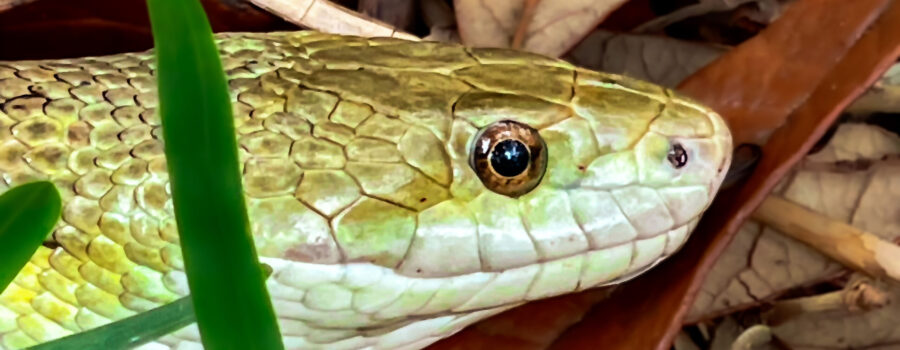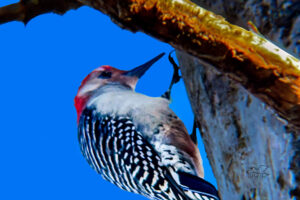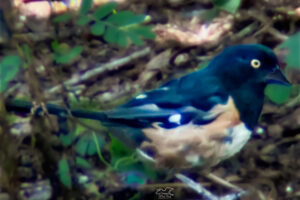Yellow Rat Snakes are Beautiful and Great to Have Around

Back in March, when it was cool enough to hike in the afternoon, I went out onto the trails in Gothe State Forest after work. While I was walking along, I heard a noise in the grass beside the path and looked down to see this beautiful yellow rat snake (Pantherophis alleghaniensis quadrivittata). I think the snake saw me at about the same time and froze, which is a common behavior for them. It freezing gave me a little bit of time to snap a couple of photos, and for both of us the evaluate the situation. I fully expected that at any moment it would go slithering off into the grass, but it stayed put. I shot several more images and slowly moved past it to a different angle where I took a few more photos. It seemed to think that it was hidden down in the grass and it watched me as I moved, but it stayed very still. I even had time to put on the telephoto lens and get some closeups. As I walked away, I turned to look at the snake and took one last shot as it went on about it’s business.

Yellow rat snakes are also called chicken snakes, Everglades rat snakes, and simply rat snakes and are pretty common in the Florida peninsula. They are actually a subspecies of the Eastern rat snake whose range extends further north to southern New York and Pennsylvania. Eastern rat snakes are dark in color, while yellow rat snakes have a yellow base color with darker longitudinal stripes. Interestingly, the further south you go the more yellow they tend to be, with snakes around Miami and on Key Largo being a bright buttery yellow. These snakes are highly adaptable and can be found both on the ground and in trees. They are excellent climbers due to a slight beveling on the belly scales that let it “grip” tree bark and rock crevices to climb. They can also be found in a lot of habitats including the sandhills, cypress swamps, marshes, forest edges, flatwoods, open fields, and even residential areas.

Rat snakes are so called because they eat large numbers of rats and mice as well as other small mammals, small birds (including domestic chicks), eggs, and occasionally smaller snakes and frogs. They are constrictors like boas and pythons, and like those snakes they wrap prey in coils of their body and suffocate it before eating it. They’re generally not aggressive towards people (freezing and hiding are their main defenses), but they will bite if handled. Although they aren’t venomous, their bites are still painful since they have many needle sharp teeth. They are also a species whose presence tends to deter venomous snakes, especially rattlesnakes, from taking up residence. For this reason, and the fact that they eat rats, many people like to have them around. A lot of farmers are especially fond of them. Living out in the woods where rats and mice are a constant problem, I am one of the people who is always glad to come across one of these guys, whether it’s out in the woods, or occasionally in my dog house.





Recent Comments